
Many times, marketers focus their SEO efforts entirely on discoverability.
They want to tick that careful balance between keyword optimized and “keyword stuffed,” but here’s a secret: being on the first page of search engine results pages (SERPs) won’t do you any good if searchers aren’t interested in your content.
Instead of focusing all your efforts on creating local SEO content to bag that top spot, you need to understand what turns searchers into readers, and readers into customers, through first improving your organic click-through rate (CTR).
Why Should You Care About Your Organic CTR?
Organic click-through rate refers to the percentage of users who click on a search engine result. In this case, that result would be your URL. While it’s primarily dependent on ranking position (the more people that see your content, the higher chance they’ll click), it is also influenced by a variety of other factors.
If you focus your efforts on improving organic CTR, you can also improve your Google ranking. When URLs are being frequently visited, the search engine algorithm will consider your page to be valuable and relevant to future queries containing your content keywords.
18 Ways to Improve Your Organic CTR
Now that you know what organic CTR is and why it’s important, let’s dive into how you can improve yours.
1. Use Long-Tail Keywords
One of the first ways you can boost your organic CTR is by using long-tail keywords—especially in your headings and title tags. Long-tail keywords are highly descriptive and, as a result, they match your content to search intent.
When users see a descriptive long-tail keyword relevant to what they’re looking for, they’re motivated to click on your URL as they’re confident your post will contain the information they’re looking for.
How do you find long-tail keywords that meet user intent?
Using keyword research tools like Ubersuggest will help. Simply plug in your seed keyword in the search bar and click “search.” Next, click on the “Keyword Ideas” in the left sidebar.
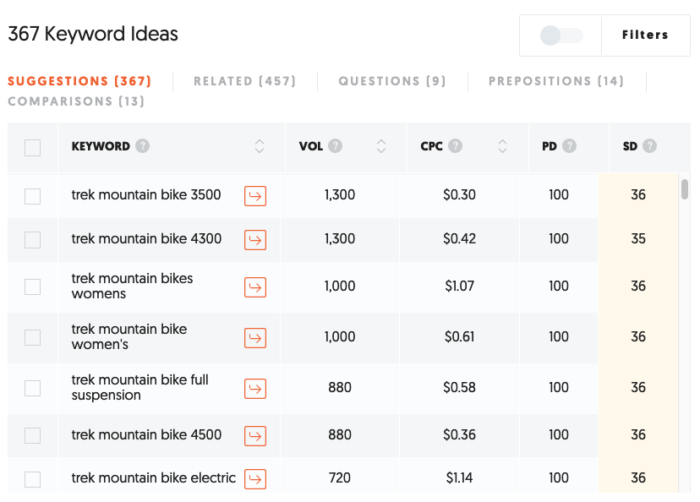
All that’s left is to select the keywords that are relevant to your post, and include them in your new content.
2. Write Effective Meta Descriptions
Another strategic way of improving your organic CTR is to write effective meta descriptions. These are the snippets of text that appear below your title tag in the SERPs. An effective meta description informs users what your page is about and also compels them to click through to your post.
Again, your keywords will come in handy here. Use them to show users that your article solves a problem they’re needing answers for. Other ways of optimizing your meta description include:
- Answering questions: If you can answer your users’ questions in the meta description, you’ve won half the battle driving your organic click-through rate up.
- Make it specific and relevant: You only have 160 characters to craft a meta description. That’s why you must make yours as specific and relevant as possible.
- Powerful language: Use persuasive and powerful language, such as emotionally charged words to elicit strong responses associated with your post to improve your CTR.
Meta descriptions shouldn’t just be a product feature—turn it into an elevator pitch to convince users you have the content and solution for them. If possible, you can also add a CTA (such as “learn more” and “find out how.”)
3. Implement Structured Data
Implementing structured data is a great way to “speak” to search engine algorithms. You can do this by using Schema.org to change your content into code that search engines can easily process. This will help them display rich, interactive search results. These are commonly called rich snippets (which we’ll talk more on later).
Of course, this type of search result attracts more clicks because:
- They appear at the top of the SERPs.
- They are more attractive than plain URLs.
- They give more information about the content at a glance.
Implementing structured data will boost your organic CTR rates as people love interactive content.
4. Create Posts With Images
Using images in your posts is a common practice, but did you know it can improve your organic CTR? Images in your content are a powerful way to boost engagement. They are an essential ingredient to your content appearing in the featured snippets and other infoboxes on the SERPs.
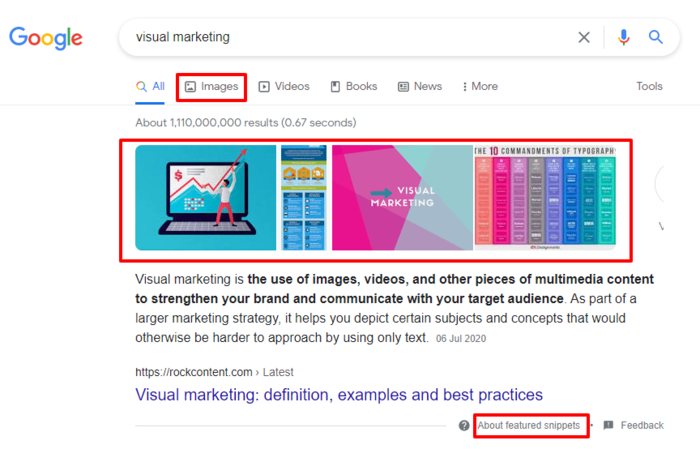
Not only that, but it also improves the chances of your URL being clicked on when users look for search results in the images section. For this to work, you must implement image SEO best practices like naming your images properly and adding alt text.
5. Use Descriptive URLs
Your page URL is one of the main pieces of information shown on SERPs. As such, you must optimize it to help you improve your organic CTR.
One way you can do that is by making it as descriptive as possible.

Try to naturally include your keyword in your URL. This will reinforce the core topic your post is about, thereby showing users that your content is relevant.
Another tip for optimizing your URL is to keep it short. This makes it easier on the eye as well as more attractive. As a result, more people will click on it.
If you’re a WordPress user, you can change your URL in your permalink settings.
6. Simplify Your Title Format
Your title tag is another part of the information displayed on the SERPs, and you must take your time to format it properly. The best way to do so is to keep it simple.
Remember, people usually skim through the search results looking for the most relevant result. If your title is simple and clearly explains what the post is about, you’ll drive more clicks.
Another title tag tip that will optimize your organic CTR is to leverage your corporate or personal branding. Here’s how I do it:

This tip will work especially well if you’re already an authority in your niche. Recognizing that the post is from a respected and trusted source will give users the confidence to click on your URL. Make sure you:
- Don’t frontload your brand: I used to put my name at the front of the title but then I noticed it caused my rankings to drop.
- Make sure your title is clear: notice that the title in the above screenshot is cut-off, but the topic has already been covered.
Use tools such as Avid Demand to preview what your content will look like on the SERPs.
7. Localize Your Content
Mobile has rapidly overtaken desktop for internet traffic sources. Most mobiles have locations turned on, for map functions, allowing Google to read their location and provide local solutions. Creating localized content is great for SMEs who only operate in certain areas and in-person service businesses.
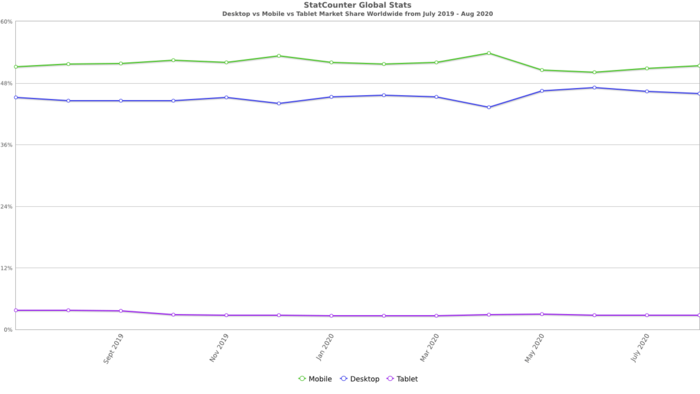
Through localized content, you can target your audience efficiently—and receive high-intent customers as a result, who are already looking online for something you sell or offer.
One way of localizing your content is to add your location in your content, meta description, and title tag. Another tip is to list your business on Google My Business (GMB). This literally puts you on the map. When local searches are made, your location and other business info will appear in the search results alongside competitors.
Remember, to drive clicks, you must offer relevant information. For local searches, it doesn’t get more relevant than seeing your location in your metadata.
8. Use the Listicle Format
People love lists.
Why? Listicles require minimum cognitive effort to digest.
Include them in your content strategy to improve organic clicks. To do that, make sure to include numbers in your headline and title tag. This will make it clear to users that beyond the click is an easy-to-read listicle.
Another organic CTR boosting reason to use listicles is that they increase your chances of appearing in featured snippets.
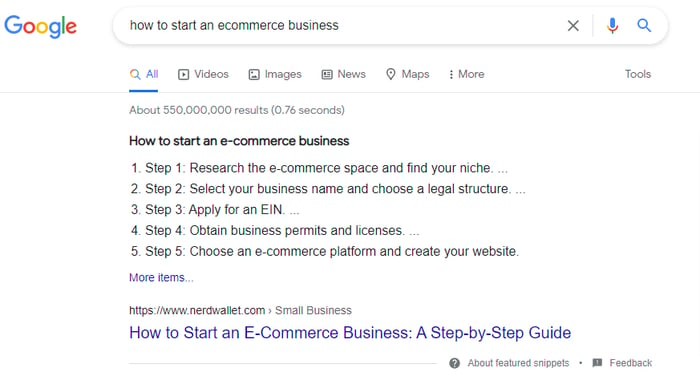
Notice how the headline doesn’t include a number, yet Google shows users that the post is a listicle in the featured snippet? Google’s SERP knows what content types are most useful to its audiences, and using listicles is bound to boost your organic CTR.
9. A/B Test Headlines on Social Media
Your headline is your first chance to compel users to click on your article. As it plays such an important role, you must make sure it resonates with your target audience.
One way to do that is by testing it on social media.
Once you’ve optimized your headline with tools like CoSchedule’s Headline Analyzer, test out your headline by sharing your article on your favorite social media platforms.
Give it a few days and then change the title of your headline and re-publish your post. Share the new article on social media and wait for the same number of days as you gave the first post then check the engagement rates for both.
The headline that drives the most engagement wins and should be the headline to use. This A/B test works best if you have a large audience on social media.
10. Use Yoast Preview (in WordPress)
For WordPress users, Yoast is another SEO tool you can use to improve your organic CTR. Before you publish your post, preview your snippet as it will appear on SERPs. You can then make changes according to the recommendations given.
This will help you see if any keywords are cut off, or even if your snippet makes sense. It also works for mobile, too, so no need to worry about cross-platform searches.
11. Use Google Ads to Preview (Other CDN)
Google AdWords Preview Tool is an alternative to Yoast SEO that also has an extra feature: it allows you to preview Ads.
Ad previews can also be optimized for organic CTR on both mobile and desktop, with alternative titles provided. This is a great way to see how different ideas would work while possibly generating new ideas for content.
12. Identify CTR Winners and Losers
One essential step to improving your organic CTR is to calculate the winners and losers of your current pages. This will show you which pages, titles, and content types are performing well as well as which are performing poorly.
You can easily use Google Analytics for this information.
First, go to “Acquisition,” then “Search Console,” then “Queries” and learn which Google searches lead to your current pages.
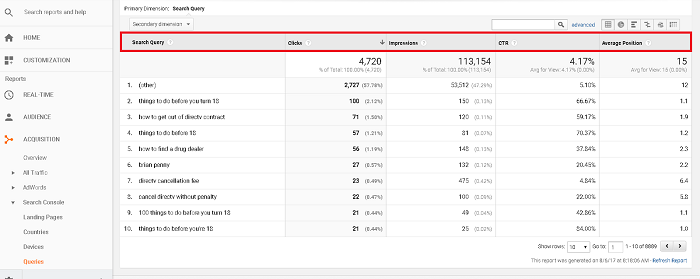
The report will show you valuable information like the clicks, impressions, CTR, and average SERP position of your pages. It also shows bounce rates, sessions, conversions, and other valuable data.
Next, in the same menu, you can also check your landing pages.
Using these two reports, you can see what works and what doesn’t. You can then revisit old pages and web content to optimize them for more organic click-throughs.
13. Optimize Site Speed
With Google prioritizing Page Experience and Web Core Vitals as ranking factors, site speed has never been more important.
If your website isn’t optimized for speed, people may click on your link but will quickly bounce off, negatively affecting your organic CTR. To put it in perspective, on mobile devices, a leap from one to three seconds in site speed increases bounce rates by 32 percent.
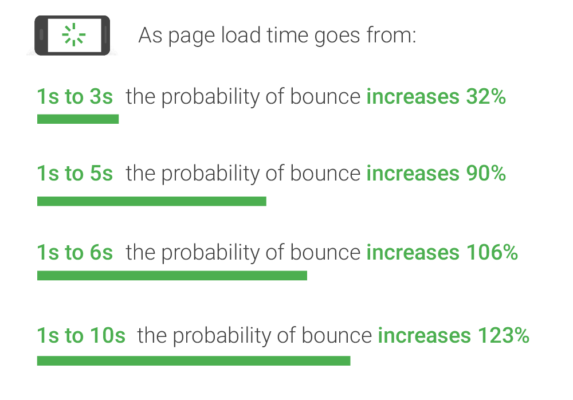
Again, this is where a tool like Ubersuggest comes in handy. To check your site speed, enter your URL into the search bar and click “Search.” Next, head to the left side of the sidebar and click “Site audit.” Scroll down to “Site Speed” and you’ll be shown the loading time for mobile and desktop. In addition to loading time, it also tests:
- First Contentful Paint
- Speed Index
- Time to Interactive
- First Meaningful Paint
- First CPU Idle
- Est. Input Latency
Ubersuggest will outline where you can make site improvements. Take its guidance into consideration, make the necessary changes, and then test your site speed again.
14. Utilize Rich Snippets
As we touched on earlier, rich snippets are another way you can drive clicks to your website. These are search results with data displayed alongside. Here’s an example:

The only ways to show those reviews and ratings in search results are either (A) activating a rich snippet plugin or (B) coding it manually. The extra information (like ratings, for example), helps users decide whether to click on your URL or not.
15. Activate Breadcrumb Navigation
“Breadcrumb navigation” is coined after the trail of bread crumbs left by Hansel and Gretel to find their way back home. Just like in the fairy tale, its secondary navigation helps you easily trace your steps back on a website.
The primary purpose of bread crumb navigation is to provide users with a positive user experience. This has a snowball effect that results in your website ranking higher and thus results in higher organic CTR.
Activating bread crumb navigation on your website is not an option. It’s vital to your success, and must be a deliberate part of your strategy. Here are detailed instructions on how you can do just that.
16. Leverage Google Analytics Reports
Have you been keeping an eye on your Google Analytics reports? These actually deliver the information you need to improve organic search performance and your landing page conversion rates. This will result in better calls-to-action and, ultimately, a higher quality score.
If you know what to look for, your Analytics Dashboard can tell you exactly how Google’s AI and your users perceive your site’s pages. You can then tailor them to be optimized to rank and for engagement.
17. Build High Converting Landing Pages
Landing pages are an essential element of your digital marketing strategy.
After all, designed well, they are an excellent source of traffic. To ensure your landing pages succeed in doing that you should:
- Understand landing page anatomy—elements such as a clear and concise headline, high-quality images, well-produced videos, persuasive copy, and calls-to-action should be done right.
- Optimize for UX—give users a positive experience by ensuring the landing page loads fast and is easy to read.
Doing this will likely increase your conversions and improve your click-through rates.
18. Use Heatmaps to Improve Site Clicks
A smart way to get the most out of your site users is to understand the areas of your web page where they click the most. It’s also an excellent idea to check where most users drop off. This is essential as it will help you know which parts of your website to improve.
Why is this important?
When people spend more time on your website and engage with it by clicking through to other pages, search engines take it as a signal that your content is valuable. On the other hand, if your bounce rate is high, your website will be ranked lower as search engines see that as a sign that your content is unhelpful.
Organic CTR Frequently Asked Questions
What Is a Good Organic CTR?
The average organic CTR is between 3-5 percent. However, a good organic CTR is not benchmarked against industry standards but against your own CTR curve.
What Is the Significance of the Organic CTR ?
Organic CTR is an important metric to track as it impacts your rankings and the amount of traffic that comes to your website.
What Are Some Common Reasons for a Low CTR?
Common reasons for low CTR include metadata that’s not compelling enough. It could also be because of not utilizing rich snippets among other things.
Is a High CTR Good or Bad?
Having a high CTR is good for business as it means more traffic to your website. It also means better brand awareness as your rankings will improve.
Organic Click-Through Rate (CTR) Conclusion
Your organic CTR plays a crucial role in the success of your digital marketing campaigns.
It’s “free” customers coming in to browse your business, brand, products, and services.
Therefore, optimizing your content must be a priority.
With so many options for improving CTRs, it’s no longer a hassle for website and business owners. Plus, the results are certainly worth the effort and speak for themselves.
What strategies do you use to improve your organic CTR?
from Neil Patel's Digital Marketing Blog https://ift.tt/ZgtK3fp
via IFTTT
No comments:
Post a Comment